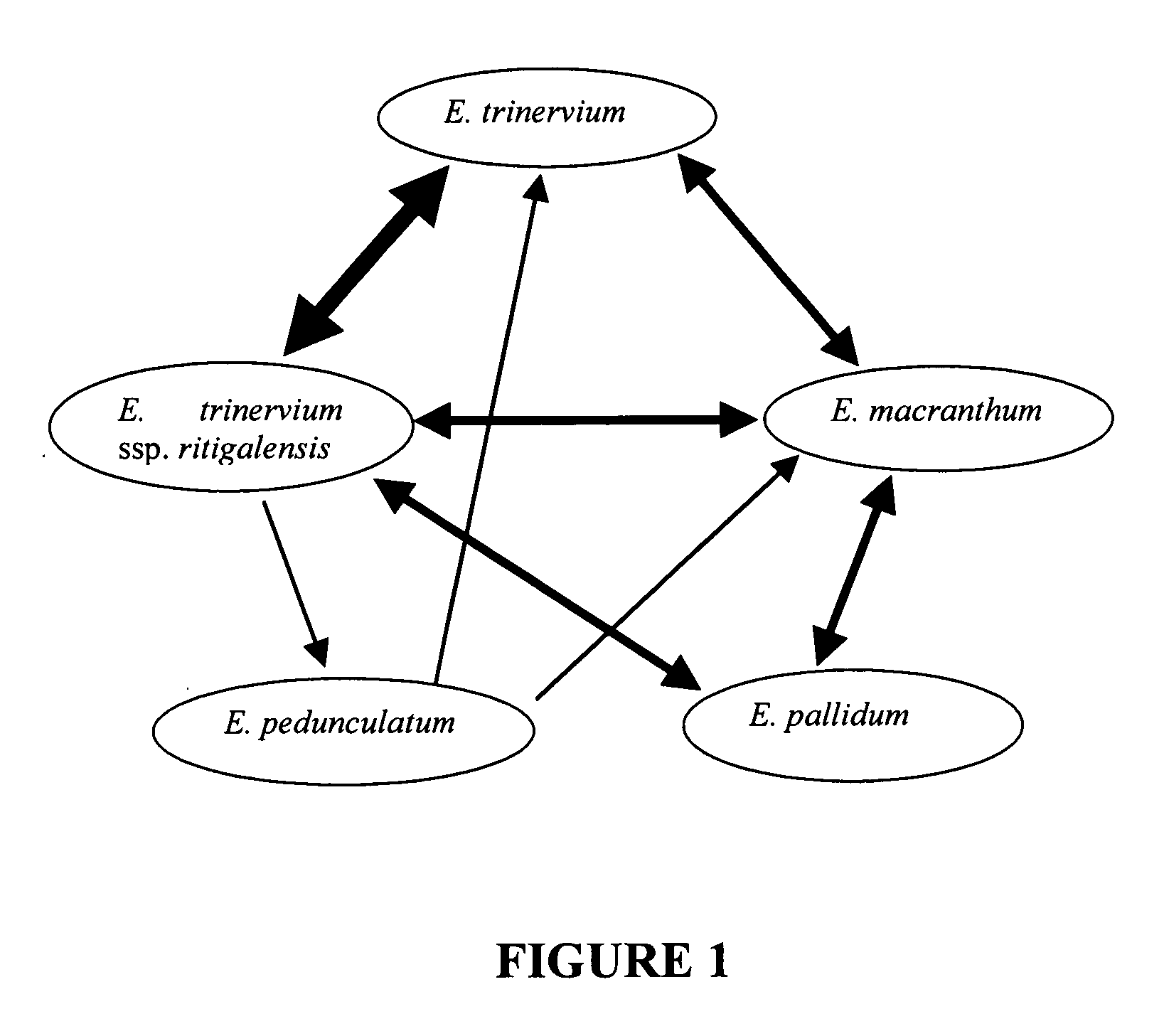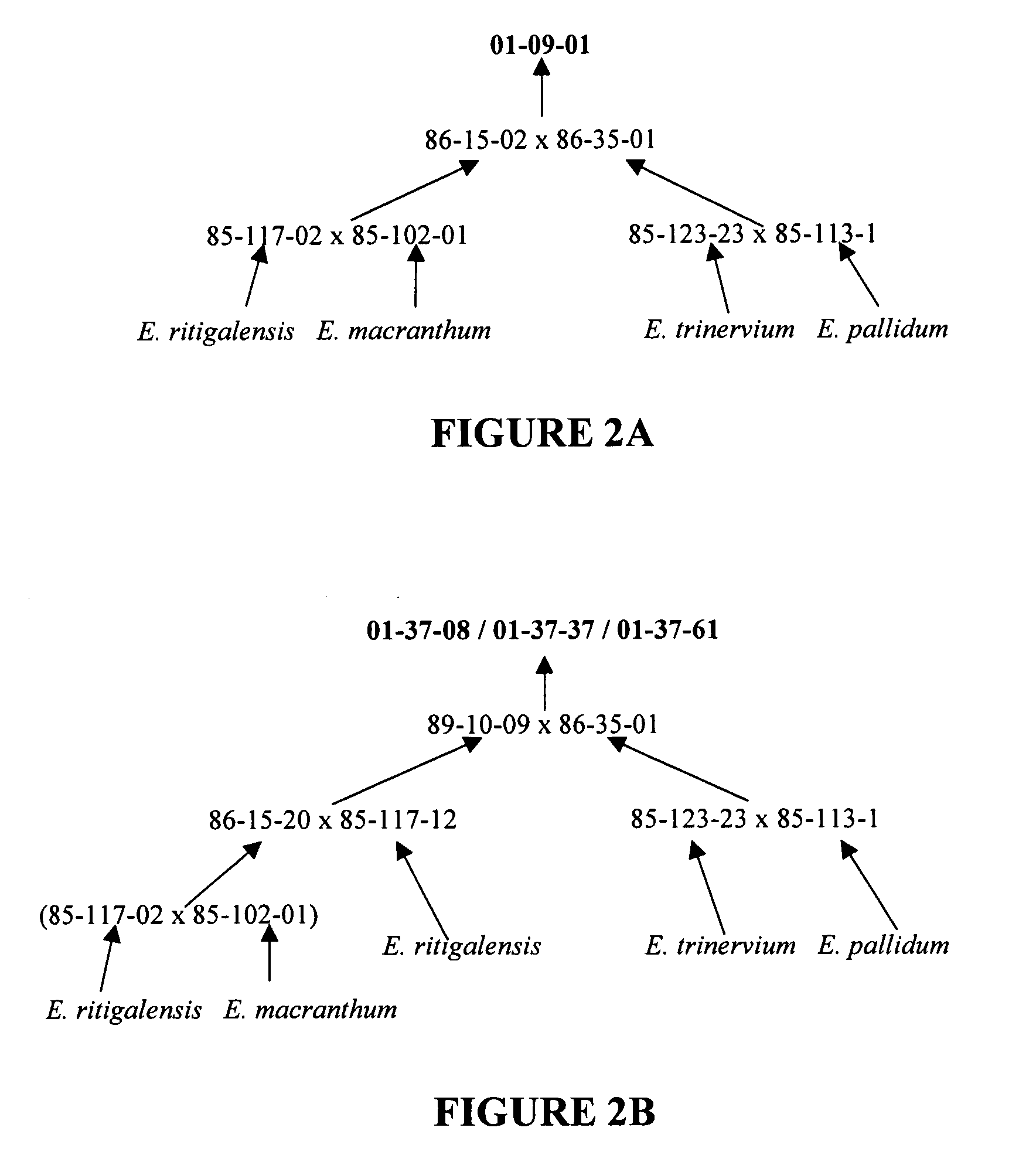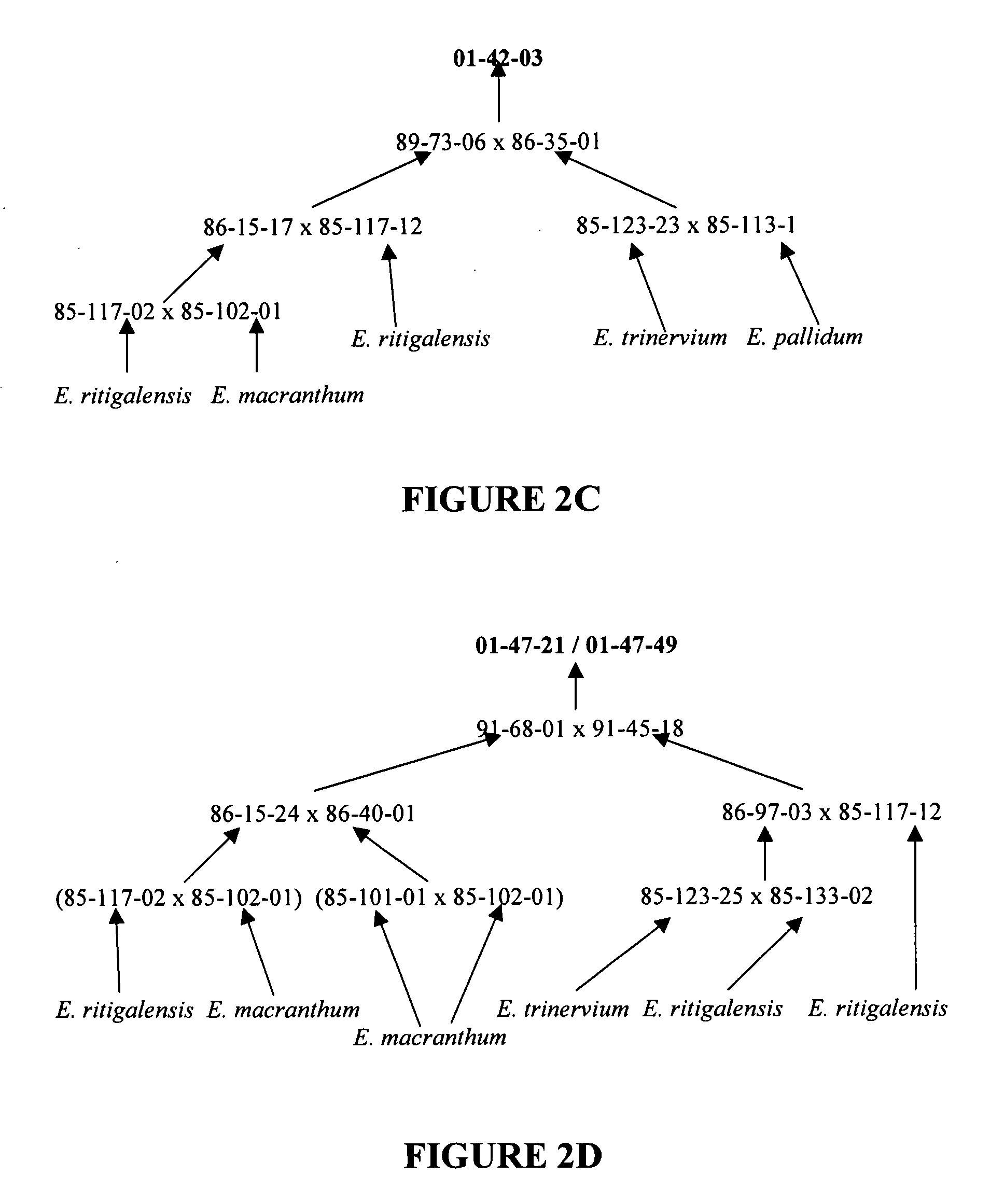Hybrids of Exacum
a technology of exacum and hybrids, applied in the field of interspecific hybrid populations of exacum, can solve the problems of not producing a commercially viable cultivar, not achieving the effect of a worthy introduction, and no single species or taxon possesses sufficient desirable traits for direct introduction or domestication
- Summary
- Abstract
- Description
- Claims
- Application Information
AI Technical Summary
Benefits of technology
Problems solved by technology
Method used
Image
Examples
example 1
Origin of Plants
[0070]Five taxa of Exacum were collected from their native habitats in Sri Lanka, namely E. pedunculatum L., E. macranthum Arn., E. pallidum Trimen., E. trinervium (L.) Druce and E. trinervium ssp. ritigalensis (Willis) Cramer. The distinguishing characteristics for each of these five taxa are provided in gtabl1 (above) and briefly as follows:
E. macranthum
[0071]Stems 29-55 cm long, cylindrical in cross-section; basal internodes medium to long. Leaves mainly ovate to oval-suborbicular, seldom elliptical, 4.5-9.7×1.8-4.3 cm; apices broadly acute to broadly acuminate. Flowers dark violet, sometimes with red tinge, 5-merous. Calyx lobes 8-19×1-3 mm. Corolla lobes broadly ovate, obtuse, 14-32×8-25 mm. Anthers 6-13 mm long.
[0072]Key characters: Stems terete with no wings or ridges; leaves oval-orbicular with undulating blades.
E. pallidum
[0073]Stems 17-48 cm long, cylindrical with 2 opposite grooves; internodes at base compact to medium. Leaves ovate 3.0-7.5×1.6-2.3 cm; a...
PUM
 Login to View More
Login to View More Abstract
Description
Claims
Application Information
 Login to View More
Login to View More - R&D
- Intellectual Property
- Life Sciences
- Materials
- Tech Scout
- Unparalleled Data Quality
- Higher Quality Content
- 60% Fewer Hallucinations
Browse by: Latest US Patents, China's latest patents, Technical Efficacy Thesaurus, Application Domain, Technology Topic, Popular Technical Reports.
© 2025 PatSnap. All rights reserved.Legal|Privacy policy|Modern Slavery Act Transparency Statement|Sitemap|About US| Contact US: help@patsnap.com



